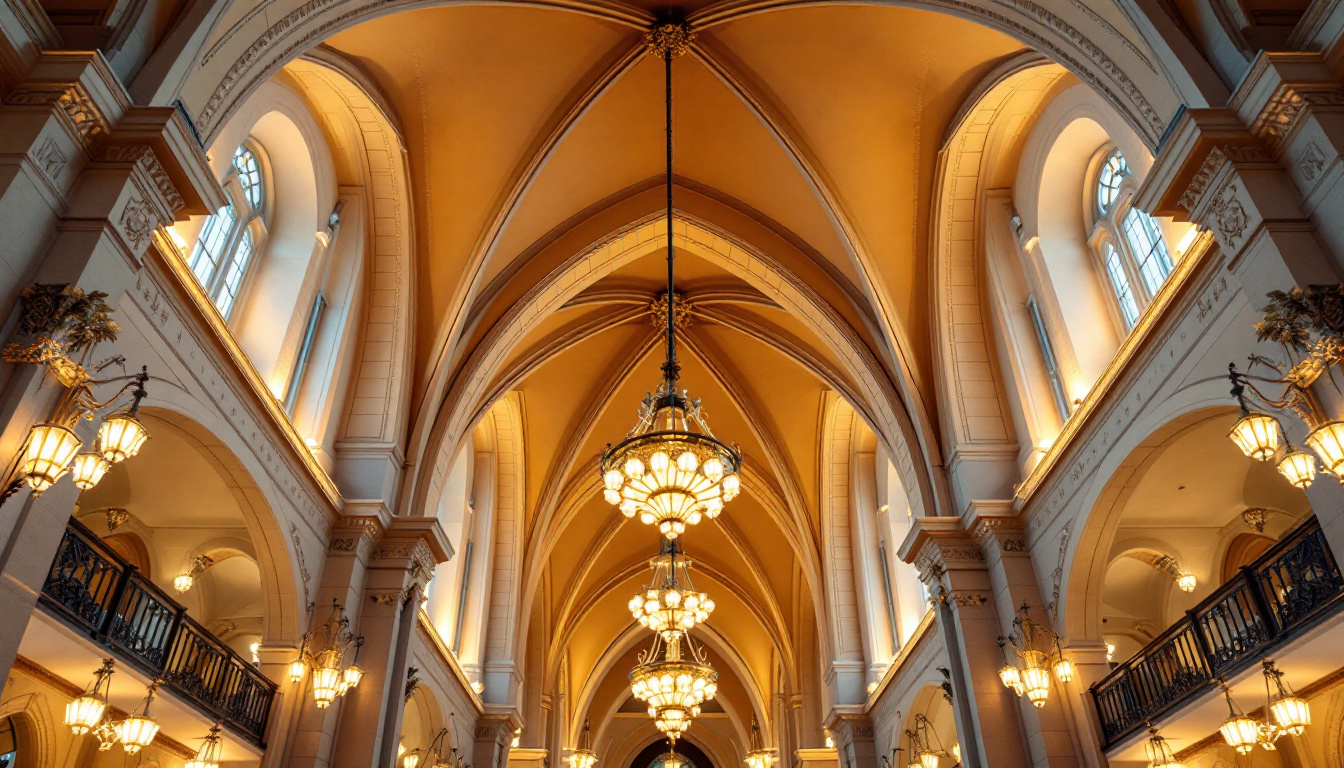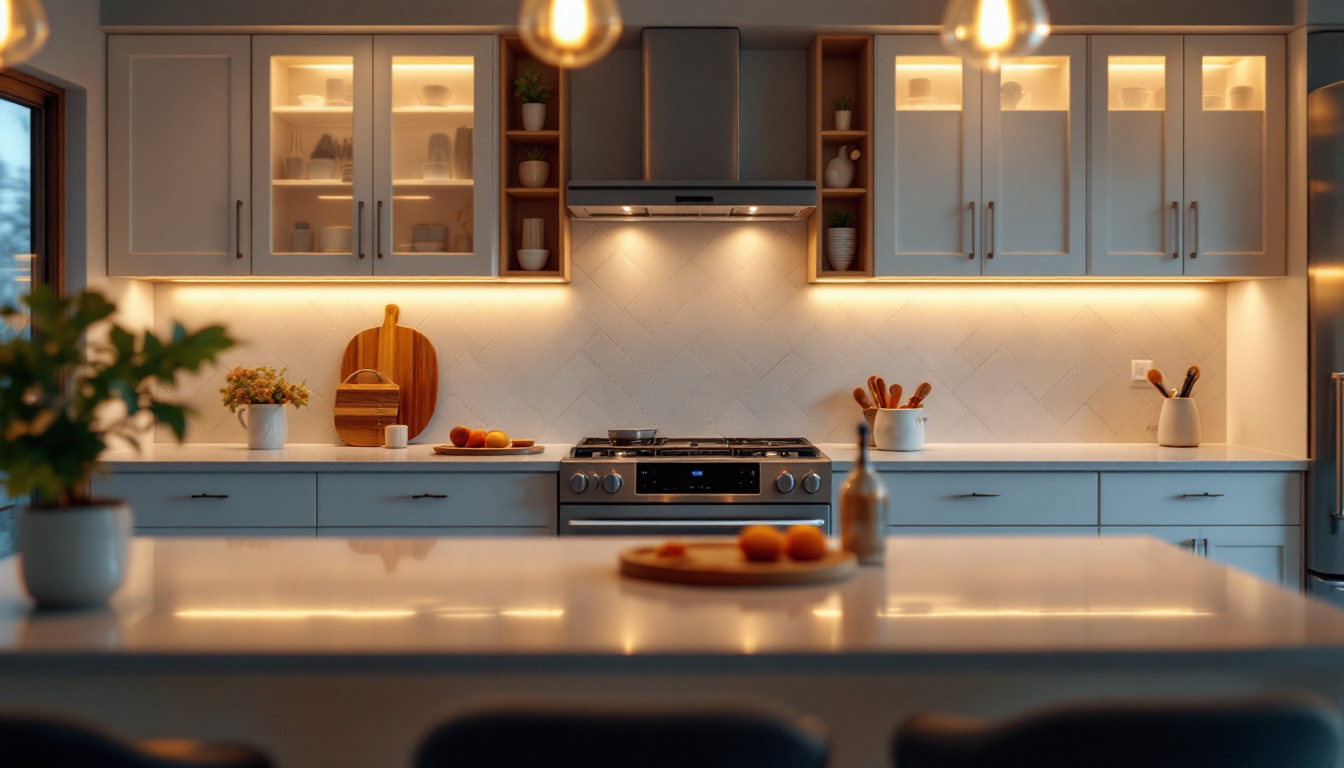
Cathedral ceilings are a stunning architectural feature that can transform any space into a grand and inviting environment. However, they also present unique challenges when it comes to lighting. For lighting contractors, understanding the intricacies of cathedral ceiling lighting is essential to delivering beautiful, functional, and effective lighting solutions. This article explores the key considerations, techniques, and options available for lighting contractors working with cathedral ceilings.
Cathedral ceilings are characterized by their high, sloped design that often mimics the shape of a church or cathedral roof. This architectural style not only adds height and drama to a room but also allows for an abundance of natural light. However, the height and angles of these ceilings can complicate the lighting design process.
Typically, cathedral ceilings are constructed with exposed beams or trusses, which can serve as both a design element and a structural necessity. These features can influence the choice of lighting fixtures and their placement. For instance, fixtures may need to be hung from beams or installed in a way that accentuates the architectural lines of the ceiling.
Additionally, the materials used in the construction of the ceiling can affect how light is perceived in the space. For example, wood beams may absorb light differently than drywall or plaster, creating varying atmospheres depending on the lighting choices made.
The height of cathedral ceilings can pose a challenge for lighting contractors. Standard ceiling fixtures may not be effective at illuminating a space that is significantly taller than average. This necessitates the use of specialized lighting techniques to ensure that the light reaches all areas of the room.
Moreover, the height can affect the distribution of light. Fixtures that are too high may create shadows, while those that are too low can disrupt the room’s proportions. Understanding the optimal height for fixtures is crucial for achieving a balanced lighting effect.
When it comes to illuminating cathedral ceilings, contractors have a variety of lighting options to choose from. Each type of lighting serves different purposes and can dramatically alter the ambiance of the space.
Ambient lighting provides the overall illumination needed to make a space functional. For cathedral ceilings, this often involves the use of recessed lighting or chandeliers. Recessed lights can be strategically placed along the perimeter of the ceiling to create a soft wash of light, while chandeliers can serve as a focal point that draws the eye upward.
When selecting ambient lighting, it’s essential to consider the wattage and lumens to ensure adequate brightness without overwhelming the space. Dimming options can also enhance the versatility of ambient lighting, allowing for adjustments based on the time of day or activity.
Task lighting is designed to illuminate specific areas where activities such as reading, cooking, or working take place. In a room with a cathedral ceiling, pendant lights or wall sconces can be effective solutions. Pendant lights can be hung at lower heights to provide focused light over dining tables or kitchen islands, while sconces can highlight artwork or architectural features.
Contractors should consider the placement of task lighting carefully to avoid shadows and ensure that the light is directed where it is needed most. Adjustable fixtures can also provide flexibility in directing light as needed.
Accent lighting adds drama and highlights specific features within a space. This can include wall-mounted fixtures that illuminate artwork or architectural details, as well as uplighting that enhances the height of the ceiling. In cathedral ceilings, accent lighting can create a sense of depth and dimension, drawing attention to the unique architectural elements.
When implementing accent lighting, it is important to consider the color temperature and intensity to achieve the desired effect. Warmer tones can create a cozy atmosphere, while cooler tones may lend a more modern feel.
Designing an effective lighting scheme for cathedral ceilings requires careful planning and consideration of various factors. Here are some techniques that lighting contractors can employ to achieve optimal results.
Layered lighting involves combining ambient, task, and accent lighting to create a well-rounded illumination scheme. This technique allows for flexibility and adaptability in lighting design, catering to different activities and moods within the space.
By using a combination of fixtures, contractors can create a dynamic lighting environment that enhances the beauty of the cathedral ceiling while ensuring functionality. For instance, a chandelier can serve as the ambient light source, while wall sconces and recessed lights provide additional layers of illumination.
Incorporating dimmer switches into the lighting design can greatly enhance the versatility of the lighting scheme. Dimmers allow for adjustments in brightness, enabling the space to transition from bright and energetic to soft and intimate as needed.
This flexibility is particularly important in rooms with cathedral ceilings, where the height can create varying levels of brightness. Dimmers can help to balance the light throughout the space, ensuring that it feels comfortable and inviting.
The color temperature of lighting can significantly impact the ambiance of a room. Warmer tones (2700K to 3000K) create a cozy and inviting atmosphere, while cooler tones (3500K to 4100K) can lend a more modern and energetic feel.
When designing lighting for cathedral ceilings, it’s important to consider how the color temperature will interact with the materials and colors used in the space. For example, warm lighting can enhance the richness of wood beams, while cooler lighting may highlight modern finishes.
While cathedral ceilings offer many opportunities for stunning lighting designs, they also present unique challenges. Understanding these challenges can help lighting contractors devise effective solutions.
The height and angles of cathedral ceilings can complicate the installation process. Accessing high points for fixture installation may require specialized equipment, such as scaffolding or lifts. Additionally, ensuring that fixtures are securely mounted is crucial for safety and longevity.
Contractors should be prepared to address these installation challenges by planning ahead and selecting fixtures that are appropriate for the height and structure of the ceiling. This may involve consulting with manufacturers or utilizing adjustable mounting systems.
Maintaining lighting fixtures in cathedral ceilings can be more challenging than in standard ceilings. Dust and debris can accumulate on high fixtures, and changing bulbs may require additional effort. Contractors should consider the long-term maintenance needs of the lighting design when selecting fixtures and planning installations.
Choosing energy-efficient LED fixtures can reduce the frequency of bulb changes, while fixtures designed for easy access can simplify maintenance tasks. Educating clients about proper care can also contribute to the longevity of the lighting system.
One of the most significant challenges in cathedral ceiling lighting is achieving a balance between light and shadow. High ceilings can create areas of darkness if not properly illuminated, leading to an uninviting atmosphere.
To combat this, contractors should focus on strategic placement of fixtures to ensure even light distribution. Utilizing a combination of different lighting types can also help to minimize shadows and create a more cohesive lighting design.
As technology advances, new lighting solutions continue to emerge, providing exciting opportunities for contractors working with cathedral ceilings. Exploring innovative options can enhance the aesthetic and functional aspects of lighting design.
Smart lighting systems allow for remote control and automation of lighting fixtures. This technology can be particularly beneficial in spaces with cathedral ceilings, where adjusting lighting may be cumbersome. With smart systems, users can easily change brightness, color temperature, and even create lighting schedules from their smartphones or tablets.
Integrating smart lighting not only enhances convenience but can also contribute to energy efficiency by allowing users to control their lighting usage more effectively.
LED lighting has revolutionized the way spaces are illuminated. These energy-efficient fixtures offer a longer lifespan and lower energy consumption compared to traditional incandescent bulbs. Additionally, LED fixtures come in a wide range of styles, making them suitable for various design aesthetics.
For cathedral ceilings, LED strip lights can be used to highlight architectural features or create a soft glow along the edges of the ceiling. Their versatility and efficiency make them an excellent choice for modern lighting designs.
architectural lighting focuses on enhancing the structure and design of a space. This can include integrated lighting solutions that are built into the architecture itself, such as cove lighting or uplighting along beams.
By utilizing architectural lighting techniques, contractors can create a seamless and sophisticated lighting design that complements the cathedral ceiling while emphasizing its unique features.
Cathedral ceiling lighting presents both challenges and opportunities for lighting contractors. By understanding the unique characteristics of cathedral ceilings and employing effective lighting techniques, contractors can create stunning and functional lighting designs that elevate the overall aesthetic of the space.
From selecting the right types of lighting to addressing installation and maintenance challenges, a comprehensive approach to cathedral ceiling lighting can lead to successful outcomes. Embracing innovative solutions and staying informed about the latest trends in lighting technology will further enhance the ability to deliver exceptional lighting designs that meet the needs of clients.
Ultimately, cathedral ceilings are not just a structural element; they are an opportunity for creativity and artistry in lighting design. By mastering the essentials of cathedral ceiling lighting, contractors can transform these spaces into breathtaking environments that leave a lasting impression.
Ready to elevate your cathedral ceiling projects with lighting that combines artistry, innovation, and affordability? Look no further than LumenWholesale. Our extensive selection of spec-grade lighting products is designed to meet the unique challenges of cathedral ceilings, ensuring you deliver not just a solution, but a masterpiece. With unbeatable wholesale prices and free shipping on bulk orders, you can provide your clients with high-performance lighting that doesn’t compromise on quality or cost. Discover wholesale lighting at the best value and make your next project shine with LumenWholesale.

Discover innovative strategies from top lighting contractors on enhancing your kitchen’s ambiance with under-cabinet lighting.

Discover how Sterilize UV technology is revolutionizing the lighting industry, offering contractors a competitive edge with enhanced disinfection capabilities and energy efficiency.

Discover the top lighting fixtures for your kitchen and learn how lighting contractors can sidestep common pitfalls.

Discover the evolution of lighting technology as we delve into the history of fluorescent and LED light bulbs.